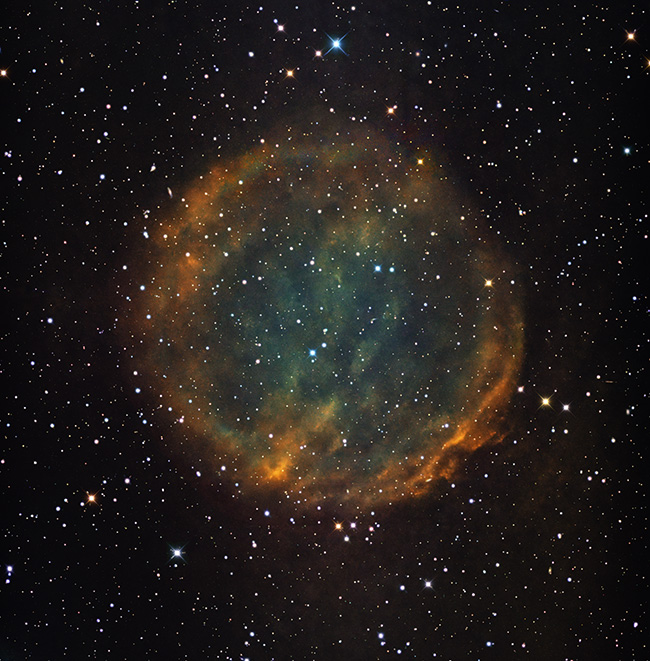
|
Date: Feb. 12-13-16-17-18, 2024 - Location: Davis Mountains West of Fort Davis, TX
Click on the image below to view at higher resolution. |

|
PuWe 1 (PLN 158+17.1) is a faint planetary nebula discovered in 1980 by A. Purgathofer and R. Weinberger[1]. This celestial object lies approximeately 1,500 light-years from the Earth on the western edge of the Lynx constellation[1]. When viewed from the Earth, it spans an angular diameter of 20 by 20 arc mins[2]. This equates to roughly two thirds the size of the full Moon. At this size, it is the second largest observable planetary nebula[2] and is only surpassed by the Helix Nebula. Like all planetary nebulae, PuWe 1 was created when a red giant star violently expelled layers of its atmosphere[3] as it neared the end of its life until only an extremely hot stellar core was left. Such stellar embers are known as white dwarf stars. Ultraviolet (UV) radiation from this central white dwarf[3] continues to excite the expelled gas causing it to glow. This process illuminates the colorful object in the image above. The image is orientated with north at the top and east to the left. Image integration and processing were accomplished using the software applications PixInsightTM and PhotoshopTM. The image was assembled by mapping SII filtered data to red, Ha filtered data to green, and OIII filtered data to blue. This method of image assembly is known as the Hubble Palette. The stars were overlaid with data from a red, green, and blue filtered image. A near true color version of the image may be viewed here.
Acknowledgment:
Member of the Dark Sky Observatory Collaborative
References
|